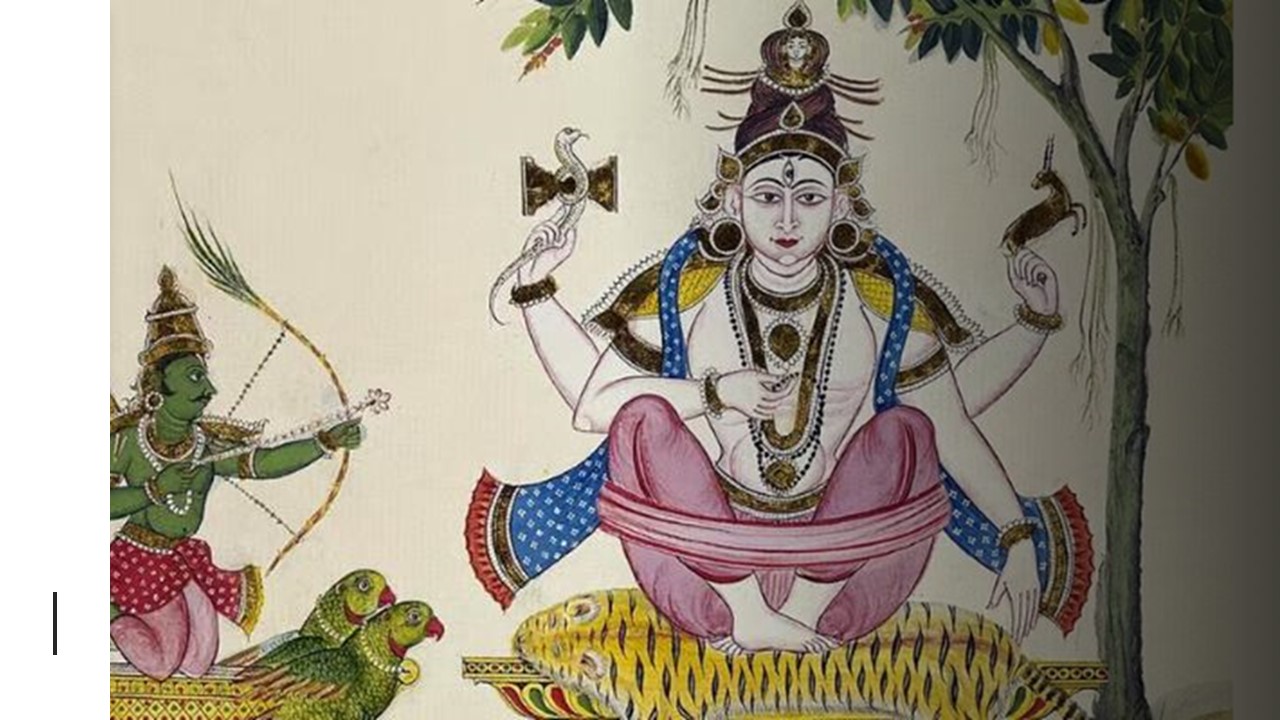Many modern Western symbols of love date back to the early Greeks and Romans. Eros was the Greek god of love, while Cupid was the Roman god of love and desire.
The image of a chubby Cupid aiming love arrows at unwary people’s hearts appears to be a typical Western symbol of love. Americans and Western Europeans can widely see him on greeting cards and chocolate boxes on Valentine’s Day.
What about Eastern cultures, such as Hinduism? Does Cupid trick them too? Or do they have their own “Cupid”? People from all over the world, especially Indo-European cultures, have sacred stories that are a lot like Hindu stories about gods.
Who Is Kamadeva, the Hindu God of Love?
In Indic traditions, Kamadeva represents the Hindu equivalent of Cupid and Eros. Kamadeva is known as the Indian or Vedic Cupid. He is the Hindu god of love, desire, and infatuation.
Jeffery D. Long, Professor of Religion and Asian Studies at Elizabethtown College in Pennsylvania, USA, explored the old Indian scriptures about Kamadeva.
Kamadeva is the god of desire and love. The word Kama comes from Sanskrit, meaning “sensual desire.“ He is accompanied by his wife, Rati, a goddess of love and sexual passion.
Different from Cupid, however, Kamadeva is depicted not as a plumpy cherub but rather as a handsome young man who rides on a majestic green parrot named Suka. He is riding a parrot’s back with a sugarcane bow, a honeybee bowstring, and flower arrow points. Kamadeva, the Hindu Cupid, also shoots his love darts into people’s hearts.
This is how the Rigveda, the most ancient of Hindu scriptures dating back at least 3,000 years, describes Kamadeva.
Each of these elements of his description represents the inherent sweetness of love. Additionally, they elicit the spirit of the spring season, when new life arises in the world. Suka, the parrot of Kamadeva, symbolizes both the spring season and the notion of love, as parrots frequently live in pairs.
The Tensions of Hindu Love
The stories of love in Hindu culture illustrate the tension between the most deeply held Hindu values. Love is a highly valued belief, especially in the context of families.
The highest ideal of life, however, is liberation from the cycle of rebirth. To reach this goal, spiritual people must give up worldly attachments, including love relationships. They should seek meditative solitude instead.
Shiva, a highly esteemed Hindu deity, embodies this tension by combining the qualities of a devoted yogi with a loving husband and father.
What Happens When Kamadeva Intervenes Life with His Love Arrows?
One time, during a period of intense meditation, Kamadeva was going to pierce his heart with an arrow. Then Shiva, angered by the interruption of his meditation, blasted the unfortunate god of love with a powerful beam of energy emanating from his renowned third eye.
Actually, Kamadeva’s intention was good. It was not meant to whimsically pierce Lord Shiva’s heart. According to the Indian story, a dangerous demon, known as Taraka, endangered the world. None of the gods could defeat this terrifying demon.
Only Kartikeya, the son of Lord Shiva, and his wife, the Mother Goddess Parvati, could defeat this demon, according to a prophecy. However, Kartikeya had not yet been conceived. Shiva was the patron deity and embodiment of yoga, so he unlikely could do this anytime soon given his dedication to meditation. So, the Hindu gods sent Kamadeva to do just that: to make Shiva fall in love with Parvati and wake him up from his meditation so he could have the child who would save the world.
Shiva demonstrates mercy despite his proneness to anger. Heartbroken over the death of her beloved, Rati begged Shiva to bring Kamadeva back to life, which he did. Following this, Shiva and Parvati had a son named Kartikeya, who later killed the demon.
What Was the Message of This Story?
It says that erotic love is important in all religions, even ones that value asceticism and meditation as ways to reach the ultimate goal of freeing people from the cycle of rebirth and its pain. Not only is Kamadeva a fun thing to look at, but it also does good things in the world.
